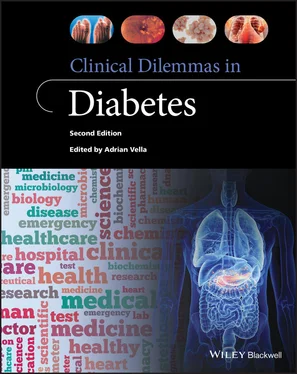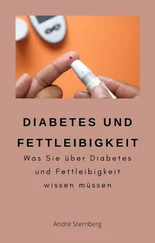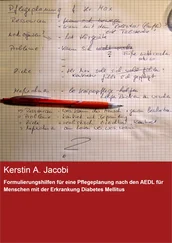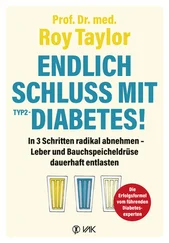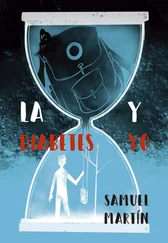1 ...6 7 8 10 11 12 ...26 The Prevención con Dieta Mediterránea (PREDIMED) study enrolled older adult subjects at high risk for but without baseline CVD and randomized participants to either a Mediterranean diet supplemented with extra‐virgin olive oil, a Mediterranean diet supplemented with mixed nuts, or a control diet based on general advice to reduce fat intake [102]. Compared to the control group, the Mediterranean diet supplemented with extra‐virgin olive oil group had significantly lower progression to DM with a HR of 0.60 (95% CI 0.54–0.85). The beneficial effect seen in this study was thought to be due to dietary composition itself and not attributed to calorie restriction, increased physical activity, or weight loss.
American diabetes association 2020 guideline recommendations for the management of prediabetes
The 2020 ADA guidelines recommend that patients with prediabetes participate in an intensive behavioral lifestyle intervention program modeled on the DPP to achieve and maintain 7% weight loss and to achieve ≥ 150 minutes/week of moderate intensity physical activity (such as brisk walking) [103]. Additionally, the ADA recommends that a variety of eating patterns are acceptable for patients with prediabetes including the Mediterranean diet and a low‐calorie, low‐fat diet. Regarding pharmacologic therapy, the 2020 ADA guidelines state that metformin for prevention of DM should be considered in patients with prediabetes, especially those with BMI ≥ 35 kg/m 2, those aged < 60 years, and women with prior GDM.
In summary, patients with prediabetes have abnormal glucose regulation mediated by impaired insulin secretion and reduced insulin action, as well as an increased risk of progression to DM [18, 25, 26]. Many clinicians screen for diabetes and prediabetes using the combination of FPG and HbA1c. However, even when used together, the combined sensitivity for diagnosing DM and prediabetes is poor [41]. Therefore, omission of a 75‐g OGTT results in both misclassification and under‐diagnosis of DM and prediabetes. The following question then arises: are there clinical consequences to misclassifying diabetes as only prediabetes or prediabetes as normal glucose metabolism?
We conclude that the answer is yes. There is a clear association of increasing microvascular complications with rising glucose concentrations, and patients with prediabetes have an increased prevalence of retinopathy, nephropathy, and neuropathy compared to individuals with normal glucose metabolism [13, 14, 55, 57,59–61, 63,104–106]. There is also an increased prevalence of CVD, cardiovascular mortality, and all‐cause mortality in patients with prediabetes compared to those with normal glucose metabolism [66–68, 70].
Therefore, recognition and treatment of prediabetes is essential to minimize morbidity and mortality. Intensive lifestyle changes emphasizing weight loss and physical activity have been shown to prevent or delay progression to DM, potentially decrease microvascular complications, potentially reduce macrovascular complications, improve comorbidities, improve quality of life, reduce medical costs, and decrease mortality [1875–80]. In addition to lifestyle changes, numerous medications are also effective in preventing or delaying progression to DM including metformin, glipizide, liraglutide, insulin glargine, several thiazolidinediones, orlistat, acarbose, valsartan, and estrogen/progestin [18,82–85,87–92, 107].
The totality of available evidence suggests that prediabetes is not only a risk factor, it is in fact a disease. Perhaps the term “prediabetes” should be changed to “early diabetes” and managed as such clinically.
1 1. American Diabetes Association, 2. Classification and diagnosis of diabetes: standards of medical care in diabetes – 2020. Diabetes Care. 2020; 43(Suppl 1):S14–S31.
2 2. World Health Organization, Global Report on Diabetes. 2016.
3 3. Diabetes Mellitus. Report of a WHO expert committee. World Health Organ Tech Rep Ser. 1965; 310:1–44.
4 4. Report of the Expert Committee on the Diagnosis and Classification of Diabetes Mellitus. Diabetes Care. 1997; 20(7):1183–1197.
5 5. Genuth S et al. Follow‐up report on the diagnosis of diabetes mellitus. Diabetes Care. 2003; 26(11):3160–3167.
6 6. American Diabetes Association, Standards of medical care in diabetes – 2010. Diabetes Care. 2010; 33(Suppl 1):S11–61.
7 7. Bennett PH et al. Epidemiologic studies of diabetes in the Pima Indians. Recent Prog Horm Res. 1976; 32:333–376.
8 8. Zimmet P and Whitehouse S. Bimodality of fasting and two‐hour glucose tolerance distributions in a Micronesian population. Diabetes. 1978; 27(8):793–800.
9 9. Rosenthal M et al. Evidence of bimodality of two hour plasma glucose concentrations in Mexican Americans: results from the San Antonio Heart study. J Chronic Dis. 1985; 38(1):5–16.
10 10. Omar MA et al. South African Indians show a high prevalence of NIDDM and bimodality in plasma glucose distribution patterns. Diabetes Care. 1994; 17(1):70–73.
11 11. Fan J et al. Bimodality of 2‐h plasma glucose distributions in whites: the Rancho Bernardo study. Diabetes Care. 2005; 28(6):1451–1456.
12 12. McCance DR et al. Comparison of tests for glycated haemoglobin and fasting and two hour plasma glucose concentrations as diagnostic methods for diabetes. BMJ. 1994; 308(6940):1323–1328.
13 13. Davidson MB et al. Relationship between fasting plasma glucose and glycosylated hemoglobin: potential for false‐positive diagnoses of type 2 diabetes using new diagnostic criteria. JAMA. 1999; 281(13):1203–1210.
14 14. Engelgau MM et al. Comparison of fasting and 2‐hour glucose and HbA1c levels for diagnosing diabetes. Diagnostic criteria and performance revisited. Diabetes Care. 1997; 20(5):785–791.
15 15. Zhang R et al. The association of retinopathy and plasma glucose and HbA1c: a validation of diabetes diagnostic criteria in a Chinese population. J Diabetes Res. 2016; 2016:4034129.
16 16. Centers for Disease Control and Prevention. National Diabetes Statistics Report, 2020. 2020.
17 17. Abdul‐Ghani MA, Tripathy D and DeFronzo RA. Contributions of beta‐cell dysfunction and insulin resistance to the pathogenesis of impaired glucose tolerance and impaired fasting glucose. Diabetes Care. 2006; 29(5):1130–1139.
18 18. Knowler WC et al. Reduction in the incidence of type 2 diabetes with lifestyle intervention or metformin. N Engl J Med. 2002; 346(6):393–403.
19 19. Talmud PJ et al. Sixty‐five common genetic variants and prediction of type 2 diabetes. Diabetes. 2015; 64(5):1830–1840.
20 20. Mahajan A et al. Fine‐mapping type 2 diabetes loci to single‐variant resolution using high‐density imputation and islet‐specific epigenome maps. Nat Genet. 2018; 50(11):1505–1513.
21 21. Grant SF et al. Variant of transcription factor 7‐like 2 (TCF7L2) gene confers risk of type 2 diabetes. Nat Genet. 2006; 38(3):320–323.
22 22. Schulz LO et al. Effects of traditional and western environments on prevalence of type 2 diabetes in Pima Indians in Mexico and the U.S. Diabetes Care. 2006; 29(8):1866–1871.
23 23. Bergman RN, Phillips LS and Cobelli C. Physiologic evaluation of factors controlling glucose tolerance in man: measurement of insulin sensitivity and beta‐cell glucose sensitivity from the response to intravenous glucose. J Clin Invest. 1981; 68(6):1456–1467.
24 24. Shah P et al. Lack of suppression of glucagon contributes to postprandial hyperglycemia in subjects with type 2 diabetes mellitus. J Clin Endocrinol Metab. 2000; 85(11):4053–4059.
25 25. Bock G et al. Pathogenesis of pre‐diabetes: mechanisms of fasting and postprandial hyperglycemia in people with impaired fasting glucose and/or impaired glucose tolerance. Diabetes. 2006; 55(12):3536–3549.
Читать дальше
